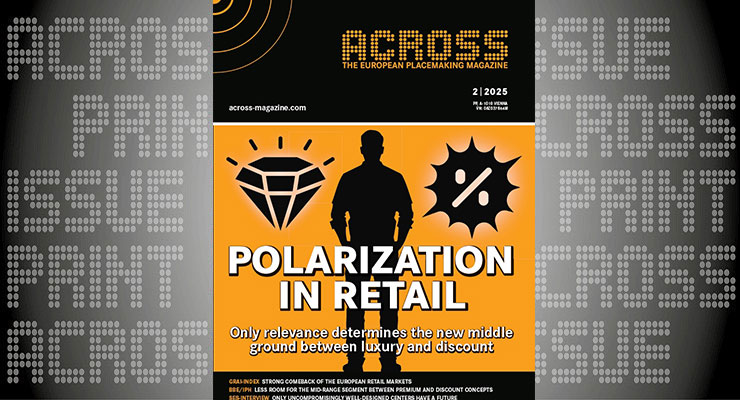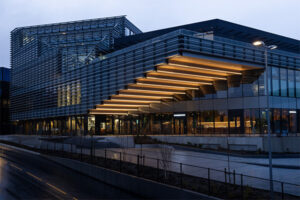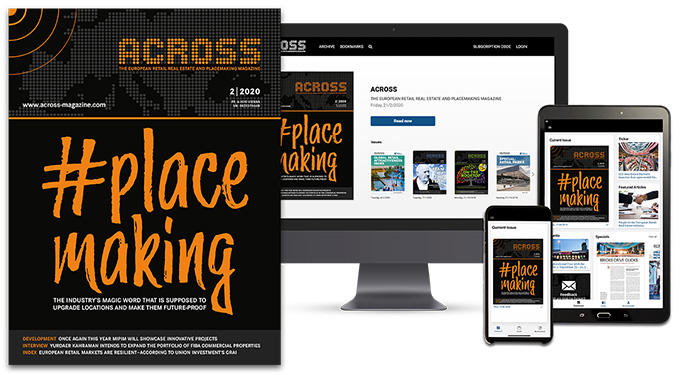Polarization is currently one of the key buzzwords in European retail, particularly in the non-food segment. Between premium concepts with high experiential appeal and the successful formats in the discount sector, there is less and less room for what used to be called the “middle ground”. In this ACROSS cover story, we aim to explore the causes, effects, and opportunities associated with this development.
The new Consumer Reality
Today’s consumer is both more demanding and more segmented. On the one hand, value-conscious shoppers are turning to discount chains such as Action, Lidl, or Pepco, seeking quality at the lowest possible price.
On the other hand, affluent consumers are increasingly willing to invest in premium brands, experiences, and status symbols – driving growth for luxury giants like Louis Vuitton, Rolex, or Rituals, which continues to expand aggressively across Europe. Moreover, there is no longer any fear of combining discount with luxury.
What’s changing is not just where people shop, but how they think about value. There is less loyalty to the middle. It appears that Consumers either want to save or splurge. The comfortable compromise of ‘affordable quality’ is losing relevance, especially when it lacks a strong brand identity.
The Vulnerable Middle
Retailers caught in the middle – offering neither prestige nor extreme value – find themselves increasingly squeezed. Chains like Esprit or Gerry Weber are examples of brands that have struggled to maintain relevance amid this shift. Many were slow to adapt, offering little differentiation or emotional connection in an era where brand storytelling, sustainability, and authenticity matter more than ever.
Shopping centers face a similar challenge. Midmarket malls, which offer a little bit of everything, now risk becoming obsolete. In contrast, centers that cater to luxury, such as KaDeWe in Berlin or La Roca Village near Barcelona, or integrate strong value propositions, like Designer Outlets or urban convenience hubs, are outperforming.
Why is the happening now
Several drivers are accelerating this polarization:
• Economic Pressure: Inflation and rising housing costs are squeezing the middle class, making shoppers more price-sensitive and selective about their discretionary spending.
• Digital Disruption: Online retail has commoditized the middle. If price and convenience are your only value propositions, Amazon already wins.
• Generational Change: Gen Z and younger Millennials are either struggling financially or embracing luxury aspirations fueled by social media. Either way, they’re skipping the middle.
The future is clarity
But there is hope—even for those in the middle. The key lies in precise positioning. Brands and centers that know who they are, who they serve, and what makes them unique can still thrive. For instance, & Other Stories, a mid-tier fashion brand under H&M Group, has found success through strong aesthetic curation and sustainability storytelling. Similarly, food-centric retail formats like Eataly or hybrid experiences like Time Out Market, which has been featured many times by ACROSS Magazine, show that consumers will still pay midtier prices – if the experience justifies it.
Retail and real estate players must ask: Are we a value or a premium option – or are we trying to be everything to everyone?
Implications for Shopping Centers
For owners and operators of retail real estate, the polarization trend calls for a decisive strategy:
• Tenant Mix Optimization: Favor brands with precise positioning, whether luxury, value, or niche experiential.
• Flexible Spaces: Enable pop-ups, food halls, or direct-to-consumer showrooms that offer a unique experience.
• Experience-Led Design: Mid-market centers must offer more than retail—think leisure, wellness, education, or community spaces. • Data-Driven Curation: Understanding catchment demographics and tailoring offerings to cater to both ends of the spectrum will become essential.
Conclusion
The middle in retail is not dead—but it is under pressure. Brands and centers that remain vague or complacent are the ones disappearing. However, those with a clear purpose and a strong connection to their target audience will remain relevant, regardless of the price point.
As the European retail real estate industry adapts to these shifts, the winners will be those who recognize that in a polarized market, standing somewhere in the middle is no longer a safe place to be – unless you know exactly why you’re there.
The polarization in the retail sector is not a shortterm market fad, but an expression of changing consumer behavior, digital transformation, and urban dynamics. If you want to respond to this, whether as a retailer or real estate developer, you don’t need to be afraid of the poles, but of the lack of profile in between.






